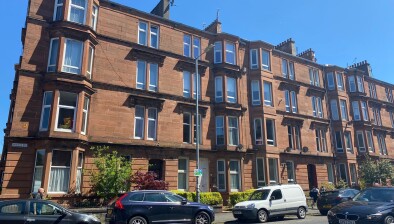Anna Evans: Independent research reveals impact of short-term lets on communities across Scotland

Anna Evans
Housing consultant Anna Evans provides a summary of independent research undertaken by Indigo House on the impact of short-term lets on communities across Scotland.
The research assessed the positive and negative impacts of short-term lets – those advertised through platforms such as Airbnb, Booking.com, TripAdvisor, HomeAway etc. The research involved secondary data analysis, surveys, and interviews involving residents, hosts, community members, and local businesses. A total of 535 people participated in the research across five different areas where there are concentrations of short-term lets.
The key findings of the research were:
- There has been a three-fold increase in short-term lets over the last three years in Scotland, from around 10,500 in April 2016 to 32,000 in May 2019.
- Tourism, and financial gain for short-term let businesses, and individual hosts have been the key drivers for this increase.
- Short-term lets tend to be focused in specific geographic areas, and in some areas are very concentrated. In May 2019 the City of Edinburgh and Highland local authority areas accounted for over 50% of all Airbnb listings in Scotland. Edinburgh’s city centre had the highest density 1km2 of Airbnb listings in Scotland.
- Geographic concentration is also shown by penetration rates of Airbnbs relative to amount of dwellings: in Scotland overall Airbnb listings only accounted for 1.2% of dwellings in May 2019, but in Skye this rose to 18.6% (the highest penetration rate by ward in Scotland), and Edinburgh’s City Centre 16.7%.
- Short-term lets are predominantly whole properties rather than private or shared rooms – in May 2019, 69.2% of active Airbnb listings were entire homes or apartments.
- The research indicated that short-term lets are more often properties used solely as visitor accommodation rather than home-shared accommodation. The host survey showed that a higher proportion of hosts let out their property which is not their main residence, with a lower proportion that ‘homeshare’ – where the host is resident or away for a short period.
- The research showed there has been a shift of properties from the residential sector to short-term lets – Host survey respondents stated that over a third of STL properties listed (36%) were previously either long-term residential lets, or owner-occupied homes. Many residents, community representatives and local businesses were concerned about the reduction of residential accommodation in their communities caused by short-term lets. Short-term lets have also been occurring in the social rented and wider affordable housing sector.
Five impacts of short-term lets on housing and communities were found. Two positive impacts related to:
- Local economic impacts driven by tourism – On average, each Airbnb listing generated 52 visitors per year in Scotland in 2018. For the nation as a whole, this was estimated as being equivalent to over 1.6 million visitors in 2018.
- Financial benefits for hosts – for both professional short-term let businesses and individual amateur hosts.
Three negative impacts on housing and communities were identified, with many resident and community participants suggesting the negative impacts outweighed the positives:
- Reduced availability of residential housing – with the impact on affordability of housing, the associated falls in resident population and fears over the long term sustainability of communites. There are related impacts identified on sourcing labour for the wider local economy and public services due to shortage of accommodation, particularly in rural areas.
- Impact on quality of life and well-being for residents – due to constant disturbance of residents from visitors where there are concentrations of short-term lets in particular areas, and in high density property types, including those with shared common space and stairs/closes such as tenements. There are also concerns over health and safety, and adequacy of building insurance where there are concentration of short-term lets in one stair/close.
- Impact on congestion and changing communities – While the increase in tourism is associated with local economic benefits, it is also identified with bringing some problems of congestion, significant demands on the local infrastructure, and changes to communities including lack of amenities and shops for local residents. Many respondents associate short-term lets with lack of tax contribution for local services.
On completion of the research Indigo House wrote to the Scottish Government separately on how this research could inform the regulation of this sector.
At a national level, across the whole of Scotland:
- Health and safety standards and building insurance – should be required for all short-term lets, including adequate building insurance to protect hosts and neighbouring residents property.
- Social and affordable housing – there should be awareness raising amongst social landlords and tenants, and other affordable housing residents on residency conditions, and the strict circumstances under which any sub-letting is permitted.
Apart from these nationwide requirements, this work has shown that short-term lets is a localised issue, and any regulatory response, we believe, should be targeted according to local circumstances. Regulations should aim to:
- Minimise the shift of residential accommodation into short-term lets to help sustain communities – whether from private renting or housing for sale, reducing area concentrations of short-term lets where there are negative impacts on sustaining the current resident population, and/or challenges in attracting and retaining incoming and key workers required for wider economic development and essential public services.
- Minimise neighbourhood concentrations of short-term lets – particularly in high density environments which can have negative impacts on quality of life and well-being for the resident community.
- Minimise concentrations of short-term lets in specific property types where there is common space, including common stairs/closes – where a change of use occurs from residential housing to visitor accommodation if there is a concentration of short-term lets in these types of properties.







